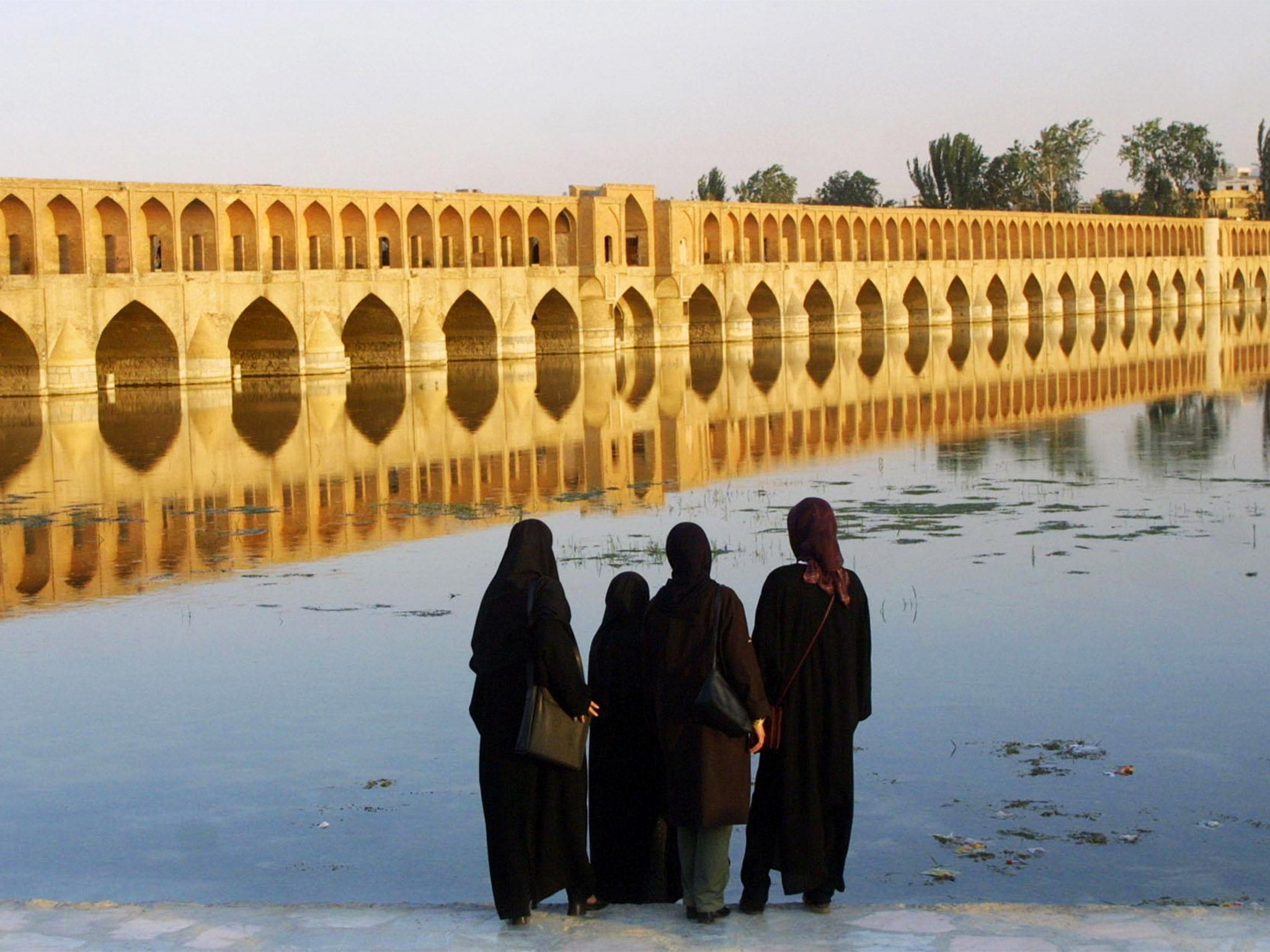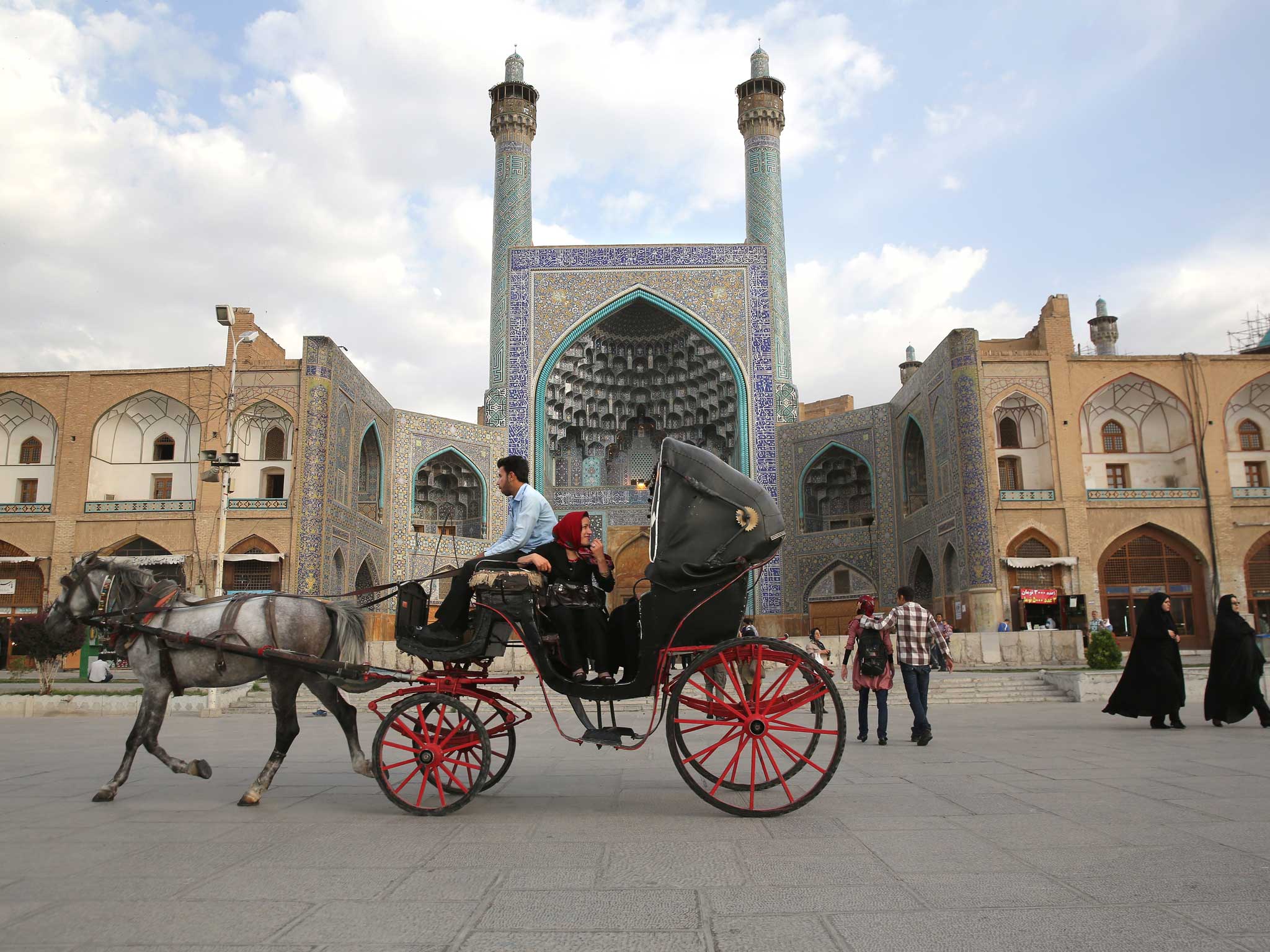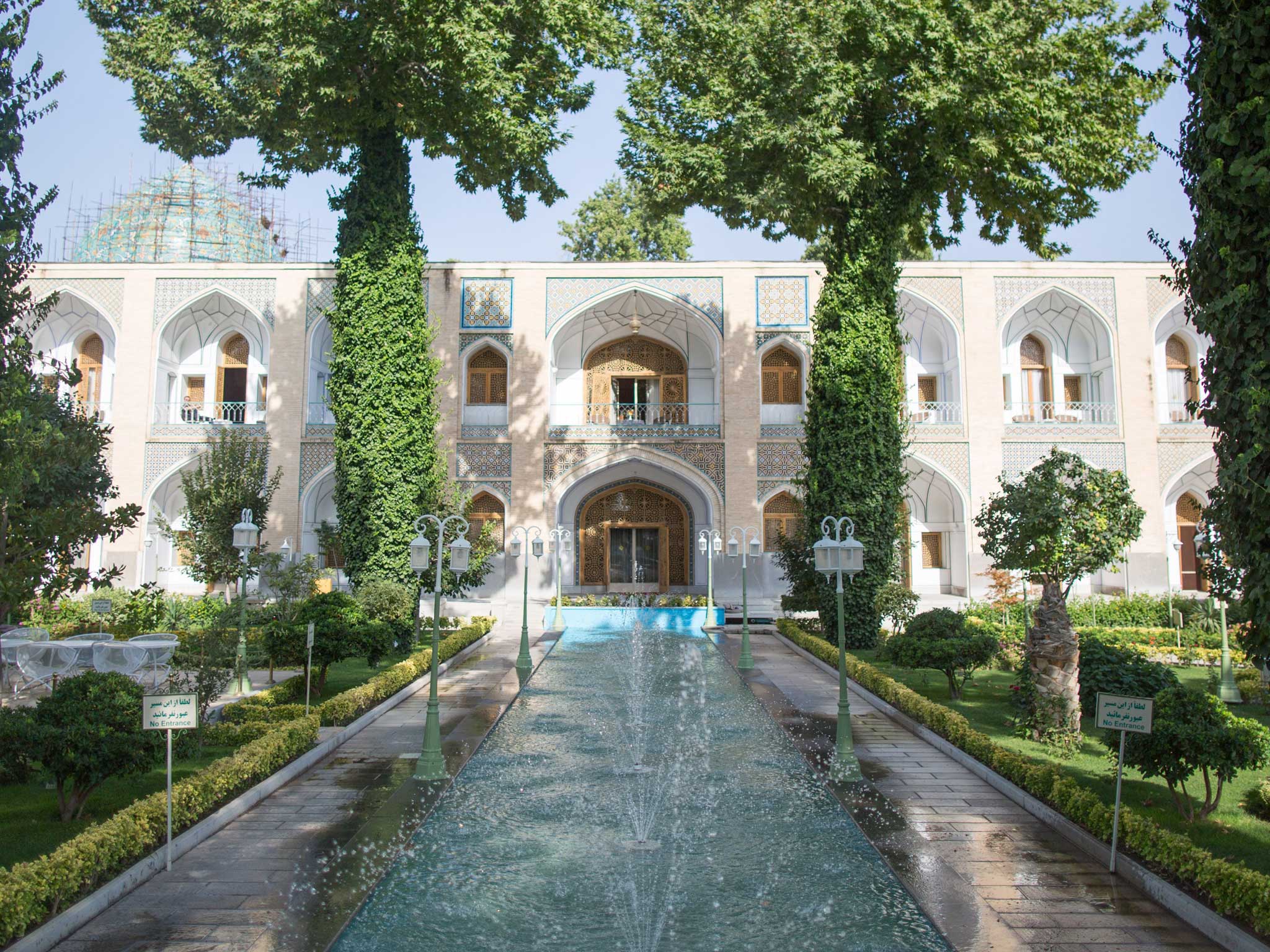Tourism in Iran: The country will soon be opening up again after years of isolation
Iran is reopening its embassies abroad. Soon, there'll be the chance for the adventurous to holiday there. Get away, says Chris Wright

Your support helps us to tell the story
From reproductive rights to climate change to Big Tech, The Independent is on the ground when the story is developing. Whether it's investigating the financials of Elon Musk's pro-Trump PAC or producing our latest documentary, 'The A Word', which shines a light on the American women fighting for reproductive rights, we know how important it is to parse out the facts from the messaging.
At such a critical moment in US history, we need reporters on the ground. Your donation allows us to keep sending journalists to speak to both sides of the story.
The Independent is trusted by Americans across the entire political spectrum. And unlike many other quality news outlets, we choose not to lock Americans out of our reporting and analysis with paywalls. We believe quality journalism should be available to everyone, paid for by those who can afford it.
Your support makes all the difference.As the British embassy reopens in Tehran and its Iranian counterpart unlocks its doors in South Kensington, it's clear that the geopolitical sands are shifting. Iran, viewed with suspicion and held under sanctions for years, is apparently a friend again – and soon you may be seeing ads in the travel pages for adventurous holidays there.
And you know what? You should go.
It's an odd combination of developments that has led us to this unlikely stage. Obama wants a foreign policy rapprochement to sign off his second term; Iran has a reformist President, Hassan Rouhani, who wants to reach out to the West and end the sanctions that have crippled his economy; and Western governments hope Iran will be a vital ally against extremist Isis. All this has led to a new age in which nuclear sanctions are set to be lifted (there are a few hurdles to pass but it's likely to happen around the new year), and Iran is likely to return to the international fold.
Many Westerners have visited Iran throughout the sanctions regime – it's been inconvenient, but not that hard – but their numbers are certain to increase once sanctions are off and consular services resume. So what will new visitors find?
Iranians are fond of telling you that at any given time you can experience four different climates within the one country, from the mountains in the north to the deserts in the interior. Iran is big, and has 80 million people spread out between the Caspian Sea in the north and the Gulf in the south.
Its signature experience, though, is the city of Esfahan, and I was there last week to take a look. There is a centuries-old saying here, “Esfahan is half the world” (it helps that it rhymes in Farsi), and the city offers a mixture of the exotic and the comfortable that has made it alluring to generations of travellers.
The headline attractions are the vast mosques, or masjed as they are known in Iran. The most famous of them, the Masjed-e Shah or Imam Mosque, is what you want Iran to look like when you picture its ancient Persian history: vivid blue tiles, ornate mosaics in vaulted stone ceilings, turquoise minarets, sanctuaries where the echoes of visitors have been heard for 400 years, a soaring 100ft entrance portal overlooking one of the largest town squares in the world. Westerners are welcome to go inside, women included; it is common to wear a headscarf and to dress reasonably conservatively, but one almost never sees the veil in Iran, even in religious places.
That's just one of dozens of historic attractions, but the city is also appealing for its tree-lined streets and parks that wouldn't look out of place in Paris. Then there's the beautiful ancient bridges over the river, a meeting ground for the young today as it has been throughout history, although thanks to a drought the river's bone dry when I visit and it's possible to stand on the riverbed and take photos. On top of that are the attractions one finds in most Iranian cities – a labyrinthine bazaar, poky little tea houses filled with accumulated tat, top-end souvenirs such as pottery and carpets, and good food.
Esfahan also, though, illustrates the problems that Iran is going to face in building a tourist economy. Since Iran is cut off from the Swift system for international financial transactions, you can't use credit cards there, and must pay for everything in cash (you need to bring absolutely everything you will spend with you in euros or dollars – in theory the dollar can't be used there, but in practice people are often happy to accept it in hotels). That also makes it very difficult to book hotels in advance, since there's no way of securing a reservation, and while the big hotels do often offer email addresses for reservations, trying to use them is an exercise in frustration.
I had hoped to try out the famed Abbasi Hotel, considered a beautiful attraction in its own right for its atmosphere and gardens, but it took five attempts to find anyone who could tell me if there was a vacancy (there wasn't).

That's the next problem: a shortage of good hotels. “Iran hasn't built proper hotels for the last four decades,” says Ramin Rabii, group CEO of Turquoise Partners, an investment group. “There is a lot of demand. But tourism is a huge opportunity, and almost all the big hotel brands have made a visit recently.”
Then there's getting there in the first place. The problem is not the flights – Esfahan has direct flights from Istanbul through Turkish Airlines, for example, with connections to London, Birmingham and Manchester – but the process of getting a visa. Prior to the embassy reopening, British travellers' best bet was to go through the Iranian embassy in Dublin, or to go through one of a number of agencies that will – for a hefty fee – provide a code that the traveller then brings to a visa desk at the airport in Iran to exchange for a visa. They're not always reliable and often not efficient; in several visits to Iran the author has never made it out of Tehran airport in less than two hours.
Still, these are the things that a removal from the sanctions list, a resumption of diplomatic relations and a return to the credit card system should address. It will take a little while but, when it happens, there is plenty to attract the visitor. Apart from Esfahan, another jewel is Shiraz to the south, which is the main hub for visits to the extraordinary ancient city of Persepolis. In Kaluts, in Iran's interior, you can camp amid 10-storey sandcastles. At one end of the country one finds cheap skiing and hill walking; at another, desert oases and homestays. And thanks to a generation of imposing domestic security, it's also safe, driving notwithstanding.

One of the biggest appeals – this is the bit that surprises everyone – is the people. “Friendly locals” is a classic travel cliché, but Iranians do actually redefine hospitality,“ says Andrew Burke, the lead author of the Lonely Planet Guide to Iran, who today works for Fairfax Media in Sydney, Australia. ”They are genuinely interested in foreigners and also keenly aware that many from the West think the country is full of Muslim fanatics.“
Indeed, the popular image of Iran – the Ayatollah, and the top-level clerics who hold power at a level separate from the elected president – is quite different from the reality on the ground, where people generally just want to get on with life and do business, caring little for either religious fundamentalism or nuclear enrichment. (”How can we produce a nuclear programme when we can't even make a good car?“ asks one Iranian broker.)
”I've lost count of the number of times I've been engaged in conversations whose main purpose was to let me know that 'we're really a lot more normal than we're portrayed',“ says Burke. ”And the conversation is often followed by an invitation to share a meal.“
So Iran might be approaching a sweet spot, from the traveller's perspective: about to get easier, but not yet well-trodden.
Chris Wright is the Middle East editor of 'Euromoney' magazine
Join our commenting forum
Join thought-provoking conversations, follow other Independent readers and see their replies
Comments